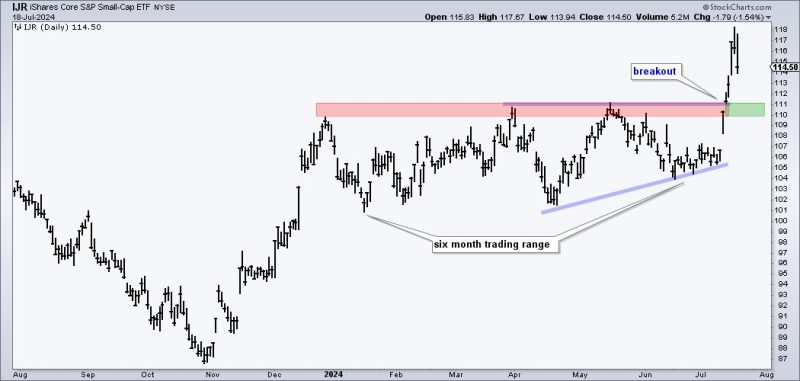In the modern world of investing, it’s no secret that small-cap stocks can offer substantial growth potential for investors looking to push the envelope. With their ability to outperform larger, more established companies, small caps often break out and lead the way in driving market momentum. However, this begs the question: now what?
Once small-cap stocks have demonstrated their breakout potential and shown strong leadership in the market, investors must be prepared to navigate the next steps strategically to capitalize on these opportunities fully. Let’s delve into some actionable steps that investors can take to make the most of small-cap breakouts and maintain a profitable position in their portfolios.
1. Diversify Your Portfolio:
While small-cap breakouts can be exciting and potentially lucrative, they also come with higher levels of risk compared to more stable large-cap investments. It’s essential to diversify your portfolio to minimize risk and ensure that your investments are well-balanced. By spreading your investments across different asset classes, sectors, and market caps, you can reduce your overall risk exposure and protect your portfolio from potential losses.
2. Stay Informed and Monitor Market Trends:
To effectively capitalize on small-cap breakouts and lead the market, investors must stay informed about market developments, industry trends, and company-specific news that could impact their investments. By conducting thorough research and monitoring key indicators, investors can make informed decisions about when to buy, hold, or sell small-cap stocks and maximize their returns accordingly.
3. Implement a Risk Management Strategy:
Given the inherent volatility of small-cap stocks, it’s crucial for investors to implement a robust risk management strategy to protect their capital and preserve their gains. This could include setting stop-loss orders, diversifying across sectors, using options to hedge your positions, or employing other risk mitigation techniques to safeguard your investments against unexpected market fluctuations.
4. Consider Long-Term Growth Opportunities:
While small-cap breakouts are often associated with short-term gains and market leadership, investors should also consider the long-term growth potential of these companies before making investment decisions. By assessing factors such as the company’s competitive landscape, growth prospects, and management team, investors can identify small-cap stocks with sustainable growth trajectories that can deliver substantial returns over the long term.
5. Seek Professional Advice:
For investors who may be unfamiliar with navigating small-cap breakouts and market leadership, seeking professional advice from a financial advisor or investment expert can provide valuable insights and guidance to help optimize investment strategies. An experienced advisor can help you evaluate potential investment opportunities, tailor your portfolio to meet your financial goals, and navigate market uncertainties effectively.
In conclusion, small-cap breakouts and market leadership present exciting opportunities for investors to capitalize on high-growth potential and drive profitability in their portfolios. By diversifying your investments, staying informed, implementing a risk management strategy, considering long-term growth opportunities, and seeking professional advice, investors can navigate small-cap breakouts successfully and position themselves for lasting financial success in the stock market.




























